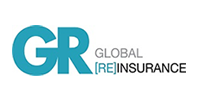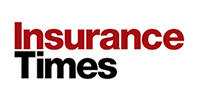Reserve additions for US casualty business adding up to $1.7bn for Everest Group did not change its credit ratings for AM Best.
News this week that Everest Group is strengthening its reserves to the tune of $1.7bn, primarily due to concerns about US casualty long-tail risks within its underwriting book, led AM Best to comment that its credit ratings would not be changing as a result of the re/insurer’s move.

Best’s financial strength rating remains at A+ “superior” and its long-term issuer credit ratings at ‘aa-’ also “superior”, with a stable outlook for the Bermuda-based group.
The reserve strengthening primarily relates to deteriorating loss trends in US casualty business, but Best’s analysis indicated no material impact on risk-adjusted capitalisation, although management’s initiatives to improve underwriting may lead to reductions in premium volume.
“AM Best recognizes that social inflation trends, and to a lesser extent economic inflation, have driven adverse reserve development across the US casualty (re)insurance market for the past several calendar years,” said AM Best.
“That trend appears likely to continue for the foreseeable future, as there are no clear signs suggesting any dissipation of key factors that are currently promoting social inflation,” the rating agency said.
“AM Best will continue to monitor Everest’s reserve adequacy and overall profitability in the aftermath of this reserve strengthening and the ongoing underwriting actions taken to improve the performance of its casualty portfolio,” the ratings firm continued.
“If Everest is required to take additional, material reserve strengthening in the near to medium term, it could cause AM Best to revisit the potential impact to the company’s ratings,” the firm added.
Analyst site StockTitan provided an analyst view and summed up the pros and cons of the situation.
Positives
- Maintained A+ (superior) financial strength rating
- Balance sheet strength assessed as ‘strongest’
- No material impact on risk-adjusted capitalisation despite reserve strengthening
- Very favourable business profile assessment maintained
Negatives
- $1.7bn net reserve strengthening required
- Unfavourable loss trends in US casualty business
- Potential decline in premium volume due to underwriting initiatives
- Ongoing exposure to social inflation risks
“The $1.7bn reserve strengthening announcement from Everest Group represents a significant financial adjustment that warrants careful analysis. While the headline number appears concerning, several key factors provide important context:
“The maintenance of Everest’s A+ (Superior) rating by AM Best is particularly noteworthy, as it indicates that the company’s capital position remains robust enough to absorb this substantial reserve increase. This resilience is attributed to Everest’s “strongest” balance sheet strength assessment, which provides a important buffer for such adverse developments.
“The reserve strengthening primarily affects the US casualty business, reflecting broader industry-wide challenges with social inflation - a phenomenon where insurance claim costs rise above general economic inflation due to factors like increasing litigation costs and larger jury awards. This is not unique to Everest, as several major insurers have faced similar pressures.
“Management’s proactive response through implementing new underwriting and reserving initiatives signals a strategic pivot that could lead to reduced premium volume but improved profitability. This trade-off between growth and profitability demonstrates a prudent risk management approach that should benefit long-term stability.
“However, investors should monitor several key aspects: 1) The effectiveness of the new underwriting initiatives in improving casualty business performance 2) Any signs of additional reserve strengthening needs in upcoming quarters 3) The impact of potentially reduced premium volume on market share and competitive positioning.
“The broader industry implications suggest continued pressure on casualty insurers, with social inflation trends showing no signs of abating. This environment could lead to further market hardening and rate increases, potentially benefiting well-capitalized insurers like Everest in the medium term.”










No comments yet